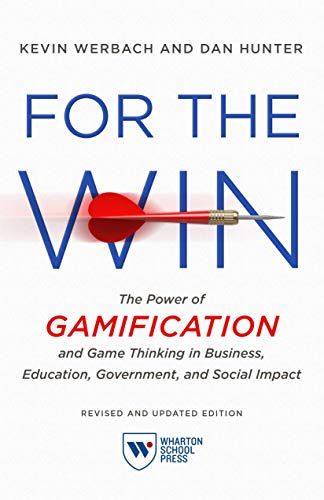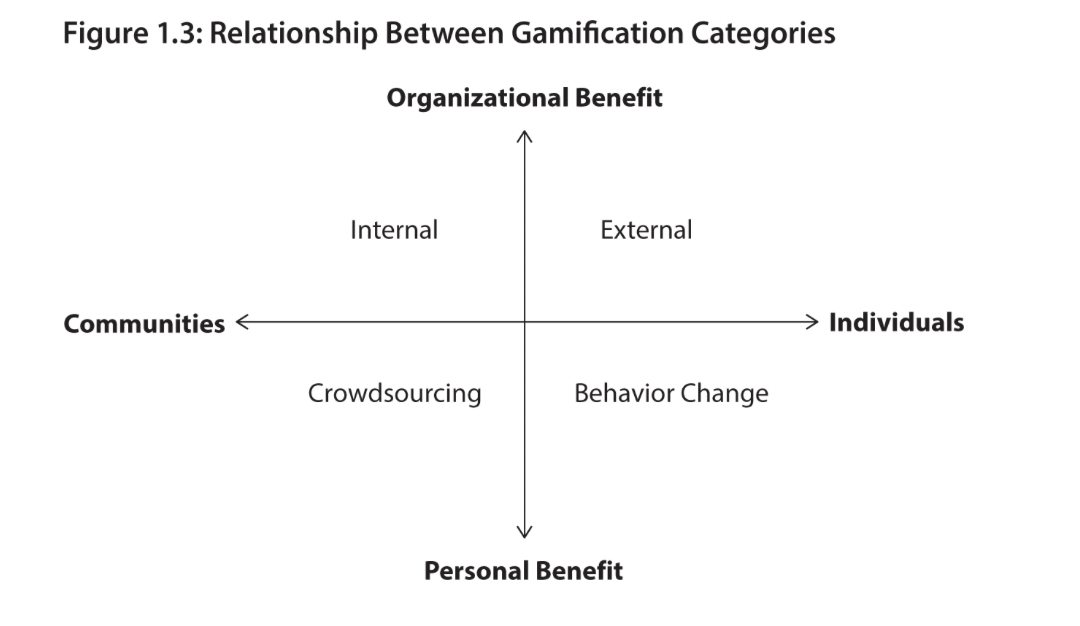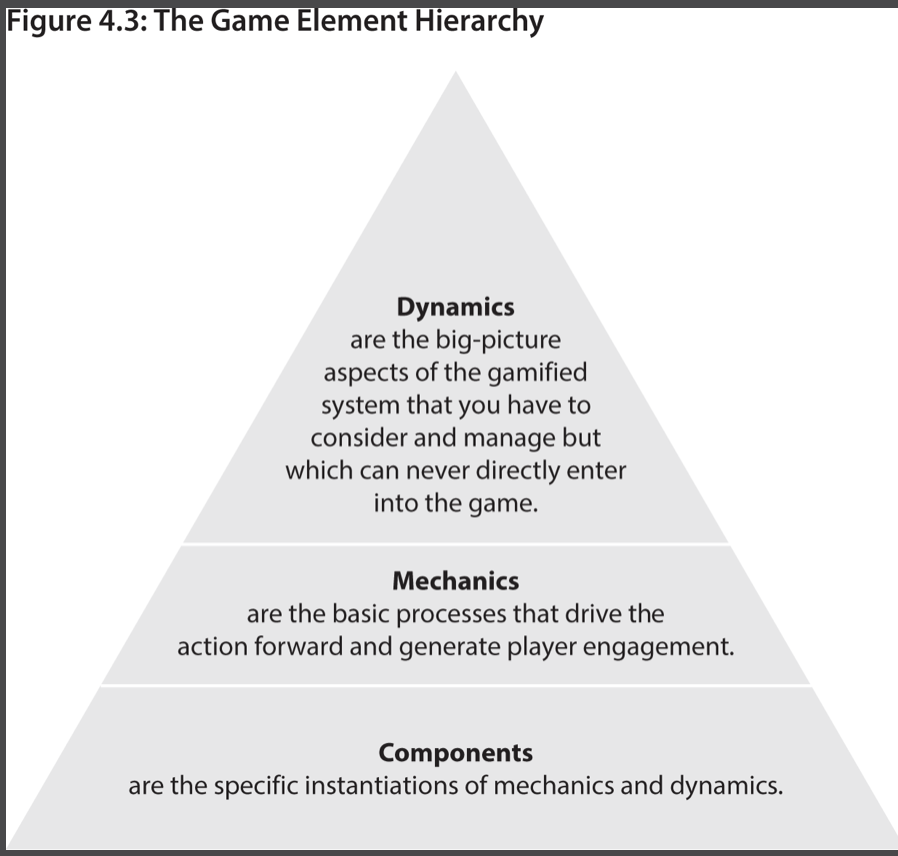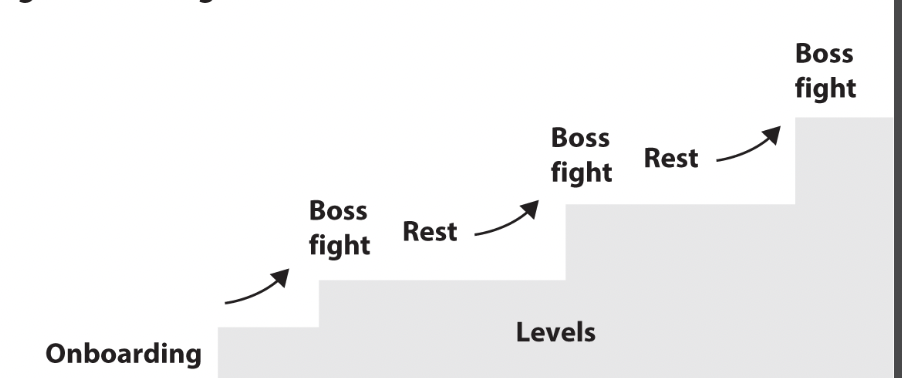
For The Win
3 Sentence Summary
High-Level Thoughts
If you’re new to the world of gamification this is a great place to start. The authors first explore gamification’s future, if it’s right for your product/organization, how to think like a game designer, and why games work. The second half of the book delves into their gamification toolkit and the six core steps to gamify anything. A relatively short and straight to the point read.
For The Win Book Summary
- Neofect South-Korean company that has developed a smart-glove game that helps motivates its patients to do rehab.
- “The essence of games isn’t entertainment. It’s a fusion of human nature and skillful design.”
- Grades are just an arbitrary point system, that wasn't designed very well.
Level 1 Getting into the Game
“Everything in the future online is going to look like a multiplayer game. —Former Google CEO Eric Schmidt”

- Example of crowdsourcing gamification = Amazon Mechanical Turk
- “It turns out that our brains are wired to crave puzzle solving, feedback and reinforcement, and the other experiences that games provide.”
- Raph Koster writes: “With games, learning is the drug.”
- Gamification leads to engagement, experimentation, and results.
- If the game is effective—not too difficult, never too easy—players are continually motivated to strive for improvement.

Level 2: Game Thinking -> Learning to Think like a game Designer
- “The trash can was part of a Volkswagen initiative called the Fun Theory"
- Sid Meier, legendary designer of the Civilization series of games, defined a game as simply “a series of meaningful choices.
- Evolution has wired our brains to be natural game-playing machines.
- Sometimes you will find that without levels players can lose interest because they have no measurable sense of progress.
Ask these 4 questions to decide if you should apply gamification:
- 1. Motivation: Can you solve a business problem by encouraging certain types of behavior? (Where would you derive value from encouraging behavior?)
- 2. Meaningful choices: Are your target activities interesting?
- 3. Structure: Can the desired behaviors be modeled through a set of rules?
- 4. Potential conflicts: Can the game avoid conflicts with existing motivational approaches?
Level 3: Why Games Work, The Rules of Motivation
A soldier will fight long and hard for a bit of colored ribbon.—Napoleon Bonaparte
- People are like objects: They have a certain inertia that needs to be overcome for them to get on with things.
Self-determination theory of Edward Deci and Richard Ryan
- Human beings are inherently proactive, with a strong internal desire for growth, but the external environment must support this.
- Sudoku activates intrinsic needs for autonomy (which puzzle I solve and how I solve it is entirely up to me), competence (I figured it out!), and relatedness (I can share the achievement with my friends).
Consider why we call salary “compensation.” It suggests the task is only worth doing to the minimal extent necessary to get the reward.
Important lessons about feedback:
- Unexpected, informational feedback increases autonomy and self-reported intrinsic motivation.
- Users like to get reinforcement about how they are doing. Informational feedback about progress toward a goal will typically engage a player and may motivate them to complete the other steps necessary to fulfill the task
- Users will regulate their own behavior based on which metrics are provided to them.
Level 4: The Gamification Toolkit
Points
- Points keep score
- Points may determine the win state -> such as a prize
- Points create a connection between progression in the game & extrinsic rewards.
- Points provide feedback.
- Points provide data for the game designer.
Researchers Judd Antin and Elizabeth Churchill suggest that a well-designed badge system has five motivational characteristics:
- 1. Badges can provide a goal for users to strive toward, which has been shown to have positive effects on motivation.
- 2. Badges provide guidance as to what is possible within the system and generate a kind of shorthand of what the system is supposed to do. This is an important feature for “onboarding,” or getting the user engaged with the system.
- 3. Badges are a signal of what a user cares about and what he or she has performed. They are a kind of visual marker of a user’s reputation, and users will often acquire badges to try to show others what they are capable of.
- 4. Badges operate as virtual status symbols and affirmations of the personal journey of the user through the gamification system.
Leaderboards
How Duolingo does it
- “lets language learners opt in to compete on a leaderboard. If they do, they’re placed in competition with 50 other players who are selected at random. In the course of the week, the players compete against each other to learn the most in their chosen language. At the end of the week, the top three are promoted to the next league, and (unless they’re already in the bottom league) the bottom 10 are demoted.”
Dynamics
- Constraints
- Emotions (curiosity, competitiveness, frustration, happiness)
- Narrative (ongoing storyline)
- Progression
- Relationships
Mechanics
The basic processes that drive the action forward and generate player engagement.
- 1. Challenges (puzzles or other tasks that require effort to solve)
- 2. Chance (elements of randomness)
- 3. Competition (one player or group wins, and the other loses)
- 4. Cooperation (players work together to achieve a shared goal)
- 5. Feedback (information about how the player is doing)
- 6. Resource acquisition (obtaining useful or collectible items)
- 7. Rewards (benefits for some action or achievement)
- 8. Transactions (trading between players, directly or through intermediaries)
- 9. Turns (sequential participation by alternating players)
- 10. Win states (objectives that make one player or group the winner—draw and loss states are related concepts)
Components
- 1. Achievements (defined objectives)
- 2. Avatars (visual representations of a player’s character)
- 3. Badges (visual representations of achievements)
- 4. Boss fights (especially hard challenges at the culmination of a level)
- 5. Collections (sets of items or badges to accumulate)
- 6. Combat (a defined battle, typically short-lived)
- 7. Content unlocking (aspects available only when players reach objectives)
- 8. Gifting (opportunities to share resources with others)
- 9. Leaderboards (visual displays of player progression and achievement)
- 10. Levels (defined steps in player progression)
- 11. Points (numerical representations of game progression)
- 12. Quests (predefined challenges with objectives and rewards)
- 13. Social graphs (representation of players’ social network within the game)
- 14. Teams (defined groups of players working together for a common goal)
- 15. Virtual goods (game assets with perceived or real-money value)
- 16. Infinite gameplay (allowing constant play)
- 17. Progression bar (a numeric or visual representation of progress toward completing a mission)
- 18. Search and discovery (a number of distinct paths toward mission completion)
- 19. Time constraints (racing against the clock)
- 20. Tangible rewards (in game progress converted into currency, products, or services)
- 21. Negative scoring
“Just as each mechanic ties to one or more dynamics, each component ties to one or more higher-level elements (mechanics and dynamics)

Level 5: Game Changer, Six Steps to Gamification
- Design bridges the gap between art and science
1. DEFINE business objectives.
- List objectives -> Rank them -> delete mechanics -> justify objectives
2. DELINEATE target behaviors.
- Sign up for an account on your website.
- Post a comment on a discussion board.
- Exercise for at least 30 minute
3. DESCRIBE your players.
- “What makes them less likely to complete a relevant task: Is it volition (a perceived lack of desire) or faculty (a perceived lack of capability)? ”
- It's easier to design for Lucy who's a ivy league graduate, pursuing an MBA while working at a law firm, then white well educated players 25-40.
4. DEVISE activity cycles.
Engagement loops describe, at a micro level, what your players do, why they do it, and what the system does in response.
- The loops is action -> feedback -> motivation back to action.
- Amy Jo Kim points out that gamification experts often come from the world of social media, where quick, temporary relationships are the norm, rather than from the games community, where deep, sustained engagement is the goal.
Progression stairs give a macro perspective on the player’s journey.

-
- 5. DON’T forget the fun!
- 6. DEPLOY the appropriate tools.
Level 6: Epic Fails and how to Avoid Them
- Researchers have found that terrorist groups and violent far-right extremists use PBLs on their secret websites to motivate activity and identify the most committed supporters.
- It has to be voluntary.
Conclusion
The most successful new gamification efforts will come from people schooled in “traditional” areas of business, philanthropy, and government who take the lessons from this book and apply them to fields that they understand and know. Gamification may be the next new thing, but its future will depend on linkages to established fields.
As an analog, think about how no one needs to persuade corporate executives to create a website anymore, or to have a presence on social media, even though entire forests were harvested in the 1990s and 2000
“We think gamification will be paired with sophisticated digital A/B testing to segment users and deliver more tailored game-like experiences that appeal specifically to the individual."